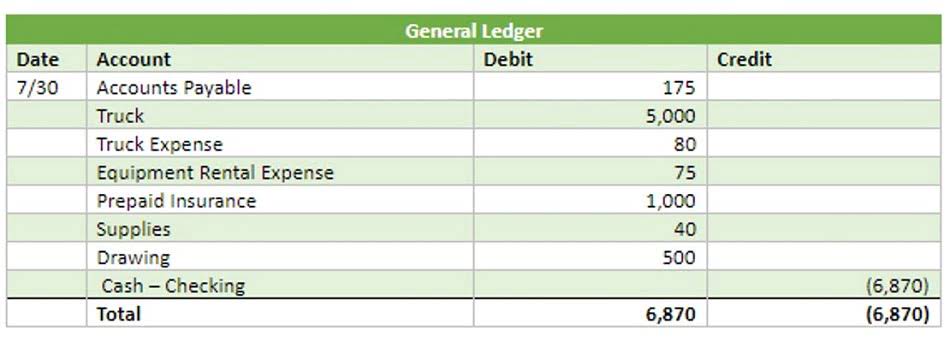
The following guide explains the fundamentals of law firm accounting and bookkeeping. We provide additional reporting and analysis so that you understand your numbers and how they impact your firm and your goals! We’re here to help you go beyond compliance and start achieving your financial goals, whatever they may be. It’s easy to record all deposits to bank accounts as income, but deposits made to IOLTA accounts aren’t income for your law firm—they belong to your client. If you’re trying to handle bookkeeping on your own in addition to putting in all those billable hours, it’s easy to overlook workflow steps or make mistakes.
- Ensure all tax filings are completed correctly and on time to avoid potential penalties or legal issues.
- Specifying your accounting methods and needs is another important step to mastery of legal accounting and financial management.
- To open any kind of business bank account, your practice needs to be registered with the state in which you are operating, have a registered business name and have an Employer Identification Number (EIN).
- A chart of accounts is a list of all your firm’s financial accounts, usually used by an accountant and available for bookkeepers.
- Borrowing is also a red flag for potential insolvency or other financial problems a law firm may be going through.
- Effective legal accounting relies on accurate and comprehensive bookkeeping to inform its analysis and strategic decision-making.
Accounting at law firms
By keeping your money separate at all times from your clients’ and strictly following trust administration rules and guidelines, you’ll sidestep a whole host of problems down the line. Bookkeepers should be up to speed on the rules and regulations of the jurisdictions they work in and have accounting software experience. Legal accountants also need to be intimately familiar with the relevant rules and regulations and be comfortable using different types of software. Accountants should also be able to provide a law firm with professional counsel to help the firm grow financially. From sending payment requests and tracking them to integrating with your go-to legal software products, LawPay’s legal billing software will fit your needs. LawPay also ensures your law firm accepts payments that comply with your state bar’s regulations surrounding trust (IOLTA) accounts and the American Bar Association (ABA) guidelines.

Exclusive Bookkeeping and Accounting for Law Firms
- Distinguishing between legal and general accounting ensures adherence to specific regulations governing law firm finances.
- This can cause serious issues and stunt your firm’s growth (more on that later).
- By partnering with us, you ensure your law firm’s financial records are accurate, compliant, and effectively managed.
- Every financial transaction involves at least two accounts, including debit and credit.
- Tax compliance isn’t optional, and for law firms, the stakes are even higher.
This ensures less time spent and fewer errors from manually matching transactions. Law firms must ensure bank statements, trust account ledgers, and client ledgers match and are accurate. This is done by completing three-way trust reconciliation between all of these statements. You can also integrate LawPay with generic accounting tools to easily track clients, invoices, balance sheet and more. For example, if you use LawPay to collect payments and invoice clients, you can easily sync all your transactions into QuickBooks for easy reporting and reconciliation. You can’t use Excel spreadsheets to maintain all of your financial books and records for an entire year.
- Clearing and organizing past financial records, addressing any backlogs, and bringing accounts up to date.
- They offer guidance to legal professionals on maintaining proper accounting practices.
- With Clio Manage handling your cases and Clio Accounting managing your financials, you can streamline operations and minimize manual entry errors–enhancing your firm’s performance from intake to payment.
- Clio Manage and other programs help firms organize their financial activities, from the expense and revenue tracking to managing billables.
- For example, with calendar integrations, only the information necessary for syncing of diary entries is shared.
- Manage business revenue in your checking account, and set aside money you’ll need at a later date (for emergencies, to pay taxes, etc.) in a savings account.
Clio Accounting: Accounting made approachable

Firstly, it encompasses trust accounting, a fundamental aspect that requires law firms to manage client Legal E-Billing funds separately from the firm’s finances, ensuring Ethical and legal compliance. Trust accounting is integral to maintaining client trust and upholding the law firm’s reputation. For many law firms, managing legal bookkeeping in-house can be overwhelming. Outsourcing this specialized service to NorthStar Bookkeeping can bring numerous benefits. Our team of experienced legal bookkeepers is well-versed in the nuances of legal finance management. By partnering with us, you ensure your law firm’s financial records are accurate, compliant, and effectively managed.

As we showed with the law firm chart of accounts samples in this post, the exact details of the chart will vary depending on your firm’s situation and jurisdiction. While it’s important to do your own research (and you may want to consult with your accountant), you can use the samples and the template in this post to guide you. Using technology—such as QuickBooks Online and Clio Manage together—also make this process easier and more efficient. Your law firm chart of accounts should also track amounts that your firm uses for client expenses, where you expect reimbursement at some point in the future.
Legal bookkeeping checklist for new law firms

If you’re not sure what legal accounting services tax deductions you should be watching for, our post covering the top tax deductions for lawyers and law firms is a good place to start. Accounting for law firms becomes so much easier when you work with an accounting professional from the beginning. Poor accounting practices, such as struggling to track billable hours or sending out invoices late, can lead to money leakage. Streamline your legal operations from start to finish with LawAccounting.com.
Messing Up With Trust Accounts
Mixing up the two can give you a false picture of your firm’s financial health. And although accrual accounting gives you a good idea of your future income and expenses, it does not provide as clear a picture of your cash flow situation as cash basis accounting. This is a more appropriate accounting method for large firms with high client turnover. Both accounting and bookkeeping for law firm are essential for success, and they share some similarities. Generally speaking, law firm bookkeeping is only concerned with organizing recording financial transactions and data. Accounting, on the other hand, deals with interpreting and presenting this financial information to relevant parties.

These challenges, if not addressed properly, can significantly impact a firm’s operational efficiency, client trust, and compliance status. Consider adding dedicated categories for client retainers, case expenses, and advanced client costs to simplify reconciliation and ensure compliance with legal accounting standards. When it comes to tax season and planning for the future, lawyers need to move beyond boxes of receipts and a spreadsheet for managing firm finances.
About
- Web |
- More Posts(31559)


